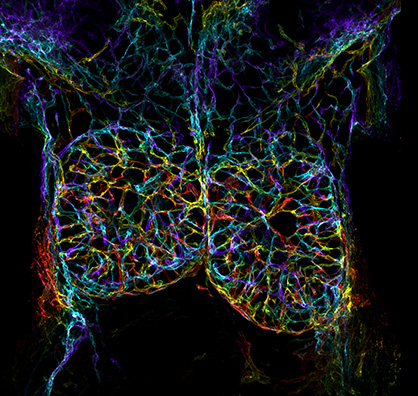Bringing Science to Life: IDRM at Oxford Open Doors
Posted by tomoko Watanabe, on 26 September 2024
Oxford Open Doors is an annual event that offers the public a unique opportunity to explore the historic and modern buildings of Oxford, many of which are normally closed to the public. Organized by Oxford Preservation Trust, the event takes place over a weekend in September and allows visitors to experience the architectural and cultural heritage of the city first hand.
As part of this year’s Oxford Open Doors event, researchers from the Institute for Developmental and Regenerative Medicine (IDRM) invited the public into their labs, offering a rare glimpse into their cutting-edge research. Visitors were guided through research areas and imaging facilities by enthusiastic staff eager to share their work.
The IDRM is a unique flagship institution at the University of Oxford, dedicated to meeting an ambitious challenge: two thirds of all deaths world-wide are due to non-communicable diseases, many of which are cardiovascular, neurological or immune system disorders that have a developmental origin, representing an urgent unmet clinical need. The mission of the IDRM is the development of new drugs and therapeutic strategies to tackle these chronic illnesses.
At its core is a formal merger of developmental biology and regenerative medicine in the form of over 200 cardiovascular, neuroscience and immunology scientists, integrating their expertise to foster multidisciplinary collaborations.
Under this research interest, we’ve developed a number of initiatives for Public Engagement that we deployed at this Open Day: the first, Synchrony, is a unique science-art project created in collaboration with computational artist Andy Lomas. Part of the public engagement efforts of the Wellcome funded Human Developmental Biology Initiative, Synchrony brings the complex world of developmental biology to life.


Synchrony allowed attendees to interact with a 3D artificial simulation of growth and pattern formation, changing the rules that govern the formation of some of the fascinating shapes that we can observe during embryonic development. This immersive experience captured visitors’ curiosity and sparked conversations about the intricate biological processes that direct embryo development and organ formation with Matthew Stower who represented the HDBI researchers. The creative process itself involved lengthy discussions between Andy and researchers Matthew Stower, Shifaan Thowfeequ, Claudio Cortes, Tomoko Watanabe and Shankar Srinivas.

In addition to Synchrony, visitors also engaged with scientific discovery through SyGlass, a virtual reality software for exploring, annotating and sharing 3D data. SyGlass allows users to fully immerse themselves in stunning microscopy images, rendered in interactive 3D in a VR environment. A breath-taking image of the embryonic thymus, contributed by David Grainger, enabled attendees to explore the beauty and intricacies of the 3D structure of this organ. Both children and adults delighted in slicing through the tissue sections and navigating the complexities of the thymus in real time.

We would like to thank The Node for their support. Your extremely popular postcards gave us the perfect ‘hook’, to talk about the wonders of development and how it takes place across species. These visuals helped visitors connect the beauty and complexity of developmental biology with the cutting-edge research happening within IDRM, while at the same time sparking very interesting conversations about research and ethics.


 (2 votes)
(2 votes)